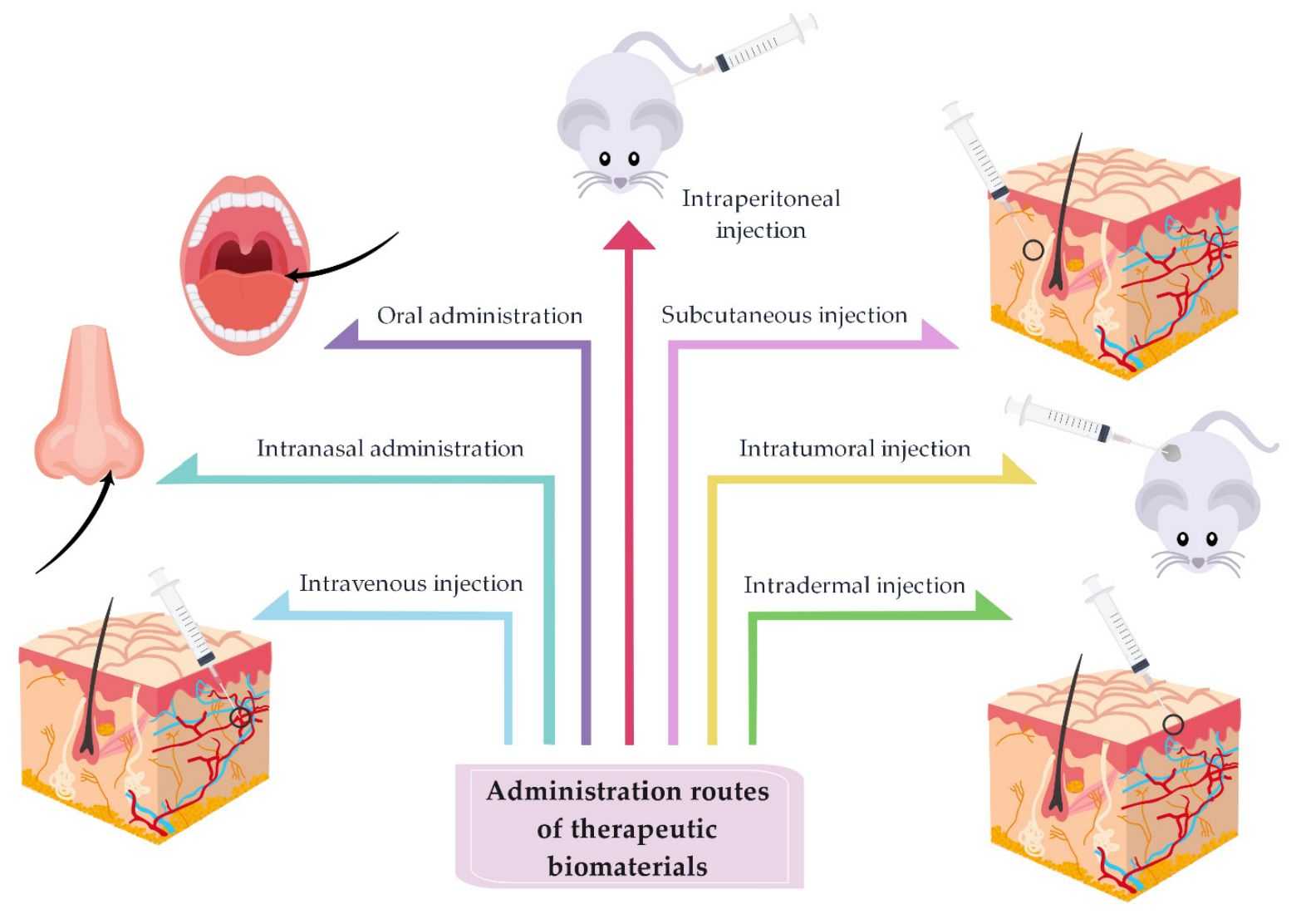How are Exosomes Administered?
The endogenous nature of exosomes is a unique advantage over drug-loading systems such as liposomes, nanoparticles, microvesicles, and microemulsions. The superiority makes exosomes an important medium for intercellular communication and plays a unique biological function in regulating normal life activities and disease diagnosis and treatment.
In recent years, exosomes have received increasing attention in drug delivery by their natural targeting and biocompatibility. It has been found that the mode of drug administration is related to the therapeutic efficacy of diseases, and different modes of drug administration affect the biodistribution and clearance of drugs in the body. Therefore, it is necessary to select appropriate exosomal drug administration modes.
Exosomes in Drug Delivery
Exosomes have good stability and biocompatibility, making them excellent drug-delivery tools. Exosomes can contain a variety of drug molecules, such as chemotherapeutic drugs, anti-inflammatory drugs, and antibiotics, which can help these drugs to be transported and released more stably in the body. In addition, exosomes can also deliver drugs to target tissues or cells through targeting, thus improving drug efficacy and reducing drug side effects.
 Figure 1. Application of exosomes in drug delivery. (Patil SM, et al., 2020)
Figure 1. Application of exosomes in drug delivery. (Patil SM, et al., 2020)
Advantages of Exosome Delivery
Targeted Delivery - Exosomes can be engineered to target specific cell types or tissues, allowing for more selective drug delivery than traditional systemic administration.
Improved Pharmacokinetics - Exosomes can protect the drug from degradation and clearance, potentially increasing bioavailability and prolonging circulation time.
Overcoming Biological Barriers - Exosomes can cross biological barriers, such as the blood-brain barrier, which often prevents the delivery of therapeutic agents to certain tissues or organs.
Reducing Side Effects - By targeting drugs to specific cells or tissues, exosomal drug delivery may help reduce off-target effects and minimize systemic toxicity.
Versatility - Exosomes can carry a variety of therapeutic payloads, including small molecules, proteins, nucleic acids, and even combinations of different drugs.
Multiple Modes of Exosomal Drug Administration
Safe and effective delivery of biologically active substances to relevant target sites is critical to drug development. Exosomes are currently one of the cutting-edge technologies in gene and drug delivery. Screening for appropriate exosomal drug administration modes can help to improve drug efficacy and lay the foundation for the clinical development of exosome-delivered drugs.
 Figure 2. Different routes of administration of exosomes into the body. (Kučuk N, et al., 2021)
Figure 2. Different routes of administration of exosomes into the body. (Kučuk N, et al., 2021)
| Modes | Benefits | Applications |
| Intravenous Infusion |
|
|
| Oral |
|
|
| Nebulized Inhalation |
|
|
| Intranasal Administration |
|
|
| In Situ Administration |
|
|
What is the Significance of Studying Exosome Administration Modes?
- Improved Drug Delivery and Bioavailability
Choosing the right exosome administration mode can protect the therapeutic payload from degradation and clearance, leading to improved bioavailability and longer circulation times.
- Targeted and Personalized Therapy
Choosing the right mode of exosome administration improves exosome targeting, resulting in more selective and personalized drug delivery. This helps to reduce off-target effects and improve the therapeutic efficacy of the drug.
- Overcoming Biological Barriers
Choosing the right mode of exosome administration allows the drug to penetrate barriers and deliver it to the central nervous system and other hard-to-reach areas.
- Enhancing Safety and Reducing Toxicity
Choosing the right mode of exosome administration can target the drug to specific cells or tissues, helping to minimize systemic exposure and reduce the risk of side effects.
- Translational Potential and Clinical Applications
Research into exosome administration modes can pave the way for the development of innovative drug delivery platforms.
As a leader in exosome research, Creative Biostructure has extensive experience in developing targeted drug delivery systems and customized exosome services. We help clients analyze the biological functions of exosomes and select appropriate administration modes, laying the foundation for subsequent pharmacokinetic and toxicology studies and clinical trials. If you are interested in our services, please contact us.
References
- Patil SM, et al. Exosomes as drug delivery systems: A brief overview and progress update. Eur J Pharm Biopharm. 2020. 154: 259-269.
- Kučuk N, et al. Exosomes Engineering and Their Roles as Therapy Delivery Tools, Therapeutic Targets, and Biomarkers. International Journal of Molecular Sciences. 2021. 22(17): 9543.